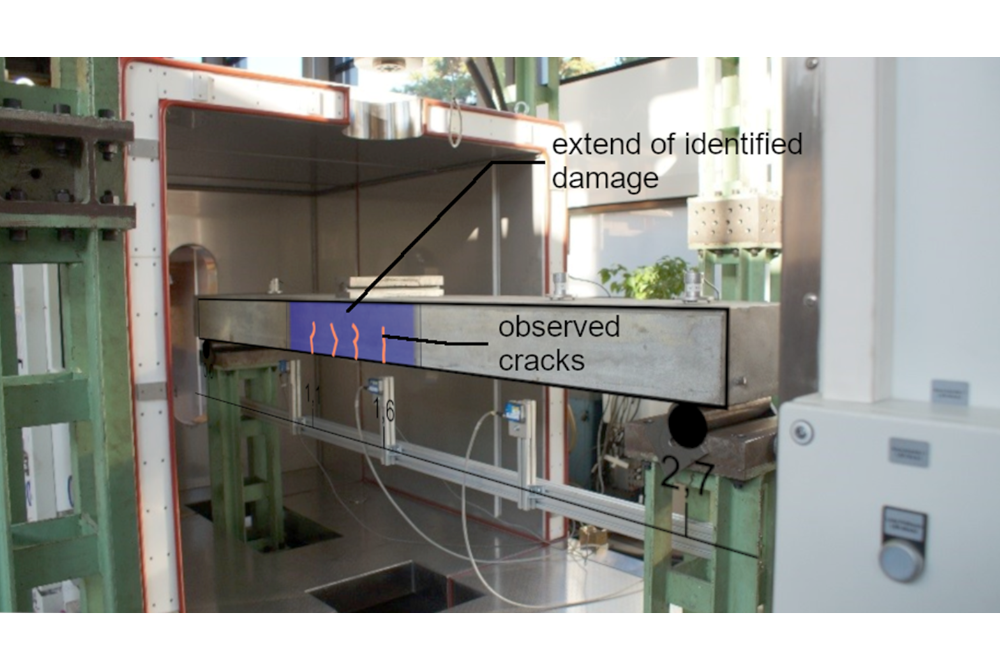
Image of the reinforced concrete beam in the opened climate chamber. The cracks observed and the extend of the damage that was identified from sensor data using the framework are highlighted.
Source: BAM
Ageing transportation infrastructure poses considerable challenges for its owners. To ensure the safety and durability of structures such as bridges, infrastructure operators can use structural health monitoring (SHM) techniques. This involves using data collected by sensors on the structure to detect damage. A major challenge is posed by environmental influences that can affect the structure's behavior and thus mask potential damage.
In this paper, a probabilistic Bayesian framework for the detection and characterization of damage to structures is presented, which simultaneously takes environmental influences into account. This enables the differentiation between changes in structural behavior caused by environmental influences (such as temperature fluctuations) and those caused by actual damage.
The main features of this new framework are:
- The explicit modeling of environmental influences on the structural behavior.
- The systematic selection of the most appropriate modeling approach for the individual structure.
- The possibility of characterizing the location and extent of damage.
The framework was tested on a reinforced concrete beam in BAM's large climate chamber. The beam was progressively damaged while being exposed to temperature variations to simulate real conditions. The proposed approach successfully identified the location and extent of damage in accordance with the observed cracks in the concrete.
This approach has several advantages:
- The complex interaction between environmental factors and structural condition can be taken into account.
- A quantitative assessment of the damage is provided, which supports the decision-making process for repair or replacement measures.
- The probabilistic nature of the approach takes uncertainties into account and provides a more realistic picture of the condition of the structure.
As the world's infrastructure ages, tools such as this Bayesian framework could play a crucial role in ensuring the reliability of infrastructure structures and optimizing maintenance strategies. By providing more accurate and timely information about the condition of structures, engineers and policy makers can make more informed decisions about when and how to intervene.
A Bayesian Probabilistic Framework for Building Models for Structural Health Monitoring of Structures Subject to Environmental Variability
Simon, Patrick, Ronald Schneider, Matthias Baeßler, und Guido Morgenthal
Structural Control and Health Monitoring 2024, Nr. 1 (2024)


